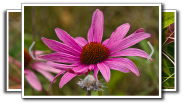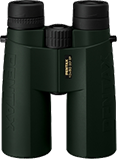black spruce borer
(Asemum striatum)
Conservation • Description • Habitat • Ecology • Distribution • Taxonomy
|
|
||||||||||||||
Description |
Black spruce borer, also called opaque sawyer, is a common, widespread, small to medium-sized, longhorn beetle. It is considered holarctic, native both in the Palearctic realm (Europe and Asia) and in the Nearctic realm (North America). It occurs throughout most of the United States and southern Canada, but it is absent from the Great Plains, the Great Basin, and the Desert Southwest. Adults are active during the day from April through July in coniferous and mixed forests. They are found on various conifers, especially pines but also spruces, firs, Douglas firs, and tamaracks. Adults are found mostly at the bases of stumps, on recently fallen trees, and on lower trunks of weakened or dying trees that have been damaged by wind or fire. The larvae bore oval tunnels up to 5⁄16″ (8 mm) wide, at first under the bark but later in the wood. Adults create slightly flattened, almost round exit holes when they emerge. Adults are 5⁄16″ to 1″ (8 to 25 mm) in length. The body is robust, dark, and dull. It is usually black, sometimes black to brown or dark brown, occasionally light brown. The surface is densely covered with short, fine hairs. The head is short and wide. It is not narrowed behind the eyes. The eyes are shallowly notched around the bases of the antennae. The antennae are less than half as long as the body. That is medium length for a beetle but short for a longhorn beetle. They have 11 segments. The second segment is about equal to or slightly shorter than the ninth. On the male, the fifth segment is longer than the third. On the female, the fifth and third segments are the same length. The plate on the first segment of the thorax (pronotum) is evenly rounded on the sides when viewed from above. The lateral margins are not flattened. The wing covers (elytra) have 2 to 4 parallel ridges. This is the feature that gives the beetle its species epithet. The legs are usually dark, sometimes light. The last part of each leg (tarsus), corresponding to the foot, has five segments, but the fourth segment is minute, and it is concealed between the lobes of the heart-shaped third segment, making it appear that there are only four segments. |
Size |
Total length: 5⁄16″ to 1″ (8 to 25 mm) |
Similar Species |
Habitat and Hosts |
Coniferous and mixed forests. Pine, spruce, fir, and tamarack. |
Ecology |
Season |
April through July |
Behavior |
Sources disagree about when adults are active. One author reports that they are active during the day (diurnal), one that it is active at night (nocturnal), and one that is is active at dusk and dawn and at night (crepuscular/nocturnal). All sources agree that they will come to lights at night. |
Life Cycle |
Females deposit clusters of several eggs each into crevices in thick bark. |
Larva Food |
|
Adult Food |
|
Distribution |
||
|
Sources |
|
| 5/19/2025 | ||
Occurrence |
||
|
||
Taxonomy |
|
Order |
Coleoptera (Beetles) |
Suborder |
Polyphaga (Water, Rove, Scarab, Long-horned, Leaf, and Snout Beetles) |
Infraorder |
Cucujiformia |
Superfamily |
Chrysomeloidea (leaf beetles and allies) |
Family |
Cerambycidae (longhorn beetles) |
Subfamily |
Spondylidinae |
Tribe |
Asemini |
Genus |
Asemum |
Subordinate Taxa |
|
|
|
|
Synonyms |
|
Anobium striatum Asemum amputatum Asemum amurense var. tomentosum Asemum atrum Asemum atrum ssp. fulvipenne Asemum brevicorne Asemum carolinum Asemum costulatum Asemum curtipenne Asemum ebenum Asemum fulvipenne Asemum fuscum Asemum gracilicorne Asemum juvencum Asemum maestum Asemum moestum var. brunneum Asemum moestum var. obsoletum Asemum parvicorne Asemum pugetanum Asemum stocktonense Asemum striatum ssp. japonicum Asemum striatum ssp. striatum Asemum striatum var. agreste Asemum striatum var. agreste Asemum striatum var. limbatipenne Asemum striatum var. moestum Asemum striatum var. neglegens Asemum striatum var. theresae Asemum substriatum Asemum subsulcatum Asémum striatum var. theresae Asémum striátum Callidium agreste Callidium striatum Cerambyx agrestis Cerambyx dichrous Cerambyx striatus |
|
Common Names |
|
black spruce borer opaque sawyer pine longhorn beetle (Europe) |
|
Glossary
Elytra
The hardened or leathery forewings of beetles used to protect the fragile hindwings, which are used for flying. Singular: elytron.
Pronotum
The exoskeletal plate on the upper side of the first segment of the thorax of an insect.
Tarsus
On insects, the last two to five subdivisions of the leg, attached to the tibia; the foot. On spiders, the last segment of the leg. Plural: tarsi.
visitor Photos |
||
Share your photo of this insect. |
||
This button not working for you? |
||
Luciearl |
 |
MinnesotaSeasons.com Photos |
||
|
||
|
||

visitor videos |
||
Share your video of this insect. |
||
This button not working for you? |
||
|
Other videos |
||
20200814 Asemum striatum |
About
Aug 14, 2020 |

|
Created: 5/19/2025 Last Updated: © MinnesotaSeasons.com. All rights reserved. |





